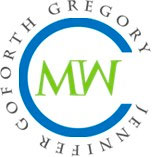Guest Post: How Elizabeth Hanes uses proposals to land high-paying writing gigs
Note from Jennifer: It’s Monday. February is practically over, even though it feels like Christmas was yesterday. I’ve heard from a lot of writers already this year who still aren’t sure how to make more money as a content marketing writer, so I’m going to keep sharing advice on doing exactly that. That’s why I’m so happy to share a guest post today from health content marketing writer Elizabeth Hanes RN. She previously shared her tips for writing faster to increase your income, and now she’s back with some fantastic guidance on using content proposals to land high-paying clients. In fact, she had so much to share on the subject that today’s post is the first of two on the topic. Check back on the blog tomorrow for Part 2!
 By Elizabeth Hanes RN
By Elizabeth Hanes RN
If your typical prospective client contact goes something like:
THEM: “Hi, I saw your info on LinkedIn. We’re looking for someone to write four blog posts a month. How much would you charge for that?”
YOU: “Hi, thanks for reaching out! I’d love to blog for you. I typically charge $400 for 800 words. I look forward to hearing back from you!”
…then all I can say is you’re leaving money on the table.
I think freelance writers make a huge mistake when they fall into the trap of throwing out rates during an informal email exchange. Rather, I suggest your goal should be to cultivate these interactions into lucrative project contracts. Producing a professional content proposal is one way you can accomplish this.
What is a content proposal?
If you’ve ever worked in the corporate arena, you should be familiar with project proposals. Any large consulting or contracting job requires a comprehensive proposal that outlines the scope of work to be performed, the timeline, the amount to be paid and the payment terms. It’s not unusual for proposals to run 100 pages or more for very large or complex projects, such as installing telecommunications equipment for a university.
For our purposes, though, a content proposal can run from two to four pages. My own standard proposal is four pages long. The proposal outlines the problem I intend to solve for the client, how I intend to solve it, the timeline involved and how much it will cost.
Why a proposal?
The benefits of a proposal for freelance content writers extend far beyond describing the nuts-and-bolts of the service you’ll be providing. A thorough proposal conveys instant credibility and professionalism. It commands respect. It says to the recipient that you are a bona fide businessperson, not a generic “freelance writer.”
But perhaps the best reason to write proposals is because they allow you to make your case for your rate. If you want to charge a premium rate – and you should – you need to be able to articulate your value to the client, and you can’t do that in a brief email exchange.
Since most freelance writers don’t seem to bother with proposals, the document sets you apart (and, I would say, above) the pack.
Who should get a proposal?
This is not an Oprah-style situation: You get a proposal, and you get a proposal, and everyone gets a proposaaaal! Not every potential gig is worthy of a full-blown proposal. For instance, I’ve found there’s really no point in writing a proposal for an agency client because they usually have set rates. I also don’t bother with a proposal for casual inquiries by prospective clients who lowball me from the get-go.
In fact, before you even consider producing a proposal for a prospective client, you should have a well-developed sales funnel in place. Don’t be deterred by the term “sales funnel.” It merely describes a process for cultivating prospects and converting them into repeat clients. If you’ve ever received repeat business from an editor, then you worked your sales funnel without even knowing it.
But if you’re going to delve into the world of proposals, then you absolutely must have a purposefully designed sales funnel in place. Otherwise you can’t possibly answer the question of which prospective clients meet the criteria for receiving a proposal.
In brief, my funnel goes:
1. New client contact that outlines the bare bones of a project (such as an email like the one I noted in the opening of this post).
2. My response to prospective client, which includes a request for them to fill out my creative brief. Note: I consider it a red flag if they balk at filling out my creative brief, so this step alone winnows out upwards of 75% of my new client requests.
3. After my receipt of the creative brief, I request a phone call to discuss.
4. During the phone call, I delve more deeply into the questions raised by the creative brief. I take extensive notes regarding why the client is seeking a freelance writer (the problem to be solved), what results they hope to gain, what their budget range is, etc. The more you can get the prospective client to talk, the more comprehensive your proposal can be.
Note: Very often, prospective clients do not want to talk budget. I have various ways to get around that (another blog post!), but suffice it to say that I often will not work with a client who refuses to provide a budget range. I can’t possibly develop a proposal without some idea of what they’re willing to spend.
5. Within 72 hours of the phone call, I email the prospective client a proposal. Then I wait.
6. I resist the urge to follow up for the first five days. In negotiations, the first person to talk usually loses, so I wait.
7. Eventually the client gets back to me with a counter-offer, and then the real negotiation starts. If I don’t hear back from the client within a week, then I send a quick follow-up email offering to answer any questions.
8. We either end up signing a contract, or we don’t. Never be afraid to walk away.
TL;dr: I only create proposals for independent (i.e.: non-agency) clients that have an in-house marketing or content person/team, defined goals and an adequate budget.
In Part 2 of her guest blog (tomorrow), Elizabeth will explain how to create a content proposal for a prospective client and we’ll share her sample proposal so you can easily create one for your freelance writing business.
Do you write proposals for your potential clients? If not, does it sound like something you want to try in the future?


Thanks for addressing this crucial topic. I sent proposals to prospects when I started freelancing but had forgotten. More importantly, mine weren’t problem-solution focussed like yours sound. I can’t wait to learn more detail about your approach tomorrow.
You’re very welcome, Lee. I’m so happy to share this information and am grateful that Jennifer is willing to publish it. I do believe the solution-oriented proposal I’ll outline in tomorrow’s post not only “sells” the best but is easy for sales-averse freelancers to use to their advantage.
Thanks for reading!
Beth
I can’t wait for this!
Would love to hear more about Elizabeth’s creative brief as well — assume it’s a questionnaire sent via Word or Google doc?
My creative brief is available for anyone to download via my website: http://elizabethhanes.com/how-to-work-with-me
Mine is a Word document, though you also could create a Google doc and then share a link to it.
Lastly, I always like to credit Debra Gordon for the concept of using a creative brief and for the original template. Mine is adapted from one she shared in a webinar a few years ago.
Beth
Thank you!
This was so helpful! It makes complete sense to do this. I look forward to reading part 2!